Barbecued ribs are one of the most beloved dishes for a summer cookout or a backyard party with family and friends. However, it is not just about marinating and grilling them. A crucial step that should not be skipped is allowing the ribs to rest before serving. Resting allows the meat to reabsorb its natural juices, resulting in tender and moist ribs. But how long should you let your ribs rest? Does the resting time differ for different types of ribs? This article will explore the answer to “How Long to Let Ribs Rest” and provide tips on achieving the perfect taste and texture.
Do Ribs Need To Rest After Cooking?
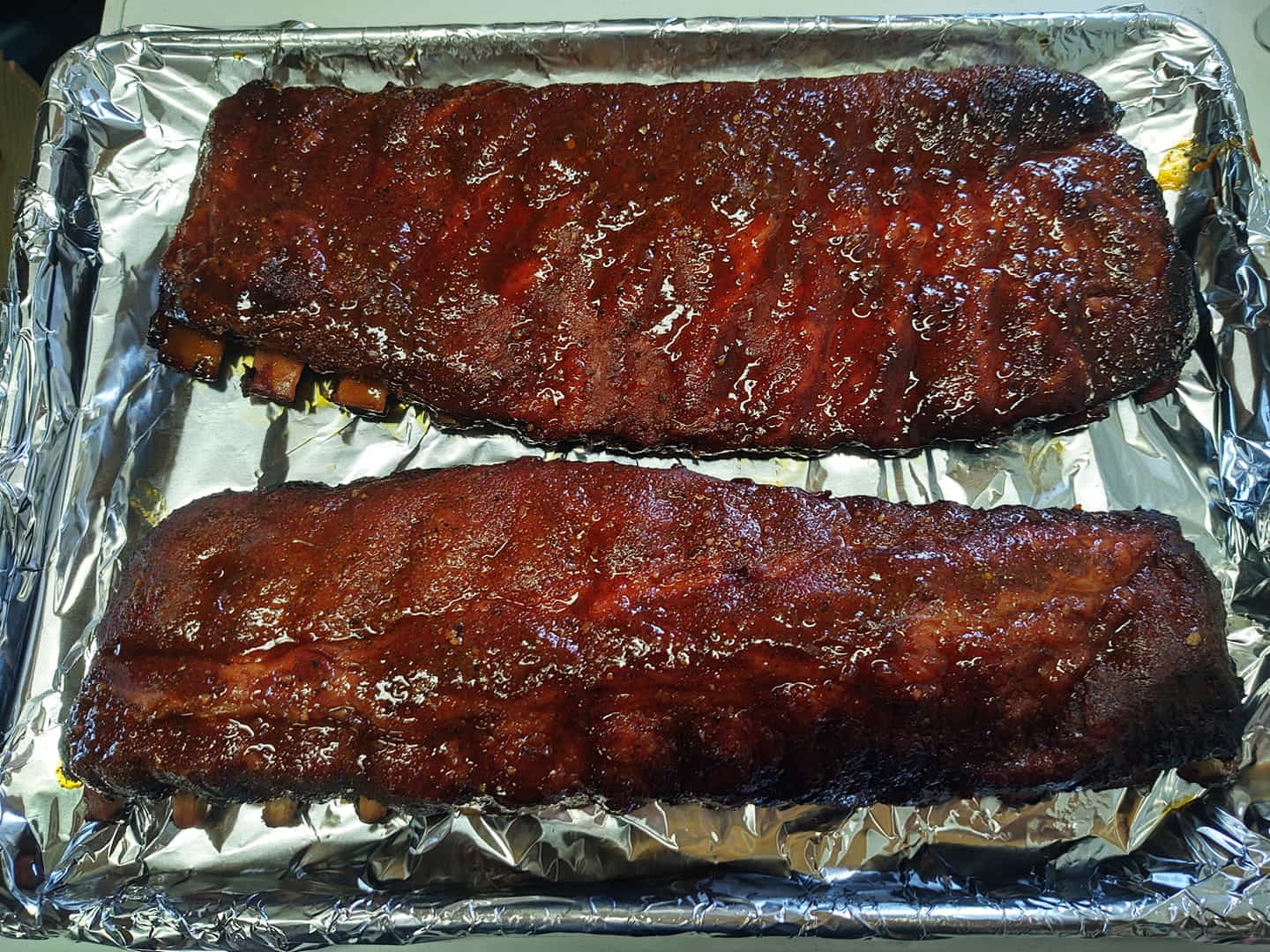
First things first, let’s talk about what resting your ribs means. Resting your ribs means allowing them to sit at room temperature after they’ve finished cooking. This allows the meat to relax and reabsorb its juices, producing a more tender and juicy final product. But why is this step necessary?
When you cook meat, the heat causes the muscle fibers to contract and expel their juices. If you cut into your ribs right after cooking, all those delicious juices that make the meat tender and flavorful would spill onto your cutting board. However, if you allow the meat to rest before cutting into it, those juices have time to redistribute throughout it, resulting in a more evenly cooked and flavorful rib.
Another benefit of resting your ribs is that it allows the meat to cool down slightly, making it easier to handle and cut. This is especially important if you’re planning on serving your ribs to a large group of people. Trying to cut hot, freshly cooked ribs can be messy and difficult, but allowing them to rest first will make the process much smoother.
In addition to improving the texture and flavor of your ribs, resting them also gives you time to get your sides and other dishes ready. Instead of rushing to cut your ribs as soon as they come off the grill or out of the oven, take advantage of the resting period to get everything else prepared. This will make your mealtime much less stressful and enjoyable for everyone involved.
How Does Resting Affect The Texture And Taste Of Ribs?
First, let’s talk about what happens during the cooking process. When you cook ribs, the heat causes the muscle fibers to contract and squeeze out moisture. This can result in tough, dry ribs if not cooked properly. However, by cooking low and slow and using a moisture-rich cooking method like smoking or braising, you can break down the tough connective tissue and render the fat, resulting in juicy, tender ribs.
But even if you’ve cooked your ribs perfectly, they still need time to rest before serving. Resting allows the meat to reabsorb some moisture lost during cooking, resulting in a juicier texture. It also gives the meat time to relax and become more tender, making it easier to pull off the bone.
But that’s not all. Resting also allows the flavors to meld together and become more pronounced. When taking your ribs off the grill, the flavors may be intense and overpowering. But after resting, the different components of the rubs, sauces, and smoke have time to blend and create a more balanced and nuanced flavor profile.
So, how do you rest your ribs? The general rule of thumb is to let them rest for at least 10-15 minutes before cutting into them. This allows enough time for the meat to reabsorb some moisture and become more tender. Some people prefer to wrap their ribs in foil or butcher paper during the resting period to help retain heat and moisture.
It’s also important to note that the longer you rest your ribs, the more tender and flavorful they will become. You can even rest your ribs for several hours before serving, as long as they are kept in a warm place and not allowed to cool down.
How Long to Let Ribs Rest?
As per the factual data, they were letting the ribs rest is crucial for achieving the best flavor and texture. Experts recommend resting baby back ribs for 10 minutes, spare ribs for 15 minutes, and beef ribs for up to 20 minutes. During this time, the heat trapped within the meat spreads out evenly, preventing the juices from escaping and allowing the meat to firm up without drying out. Resting also helps the meat reach an appropriate slicing temperature and brings out the most flavor.
In conclusion, whether you’re a beginner or a seasoned pit master, letting your ribs rest for at least 10 minutes after cooking to enhance their taste and texture is essential.
How Long To Let Prime Rib Rest?
Resting the prime rib allows even cooking, resulting in a juicier and more flavorful roast. The recommended time to let the prime rib rest is between 20 to 30 minutes, and it should be tented with foil to keep it warm. This allows the juices to redistribute throughout the meat and ensures the desired finish temperature.
It’s important to note that the time may vary depending on the size of the roast, but the general rule of thumb is to let it rest for at least 15 to 20 minutes.
How Long To Let Ribs Rest Before Cooking?
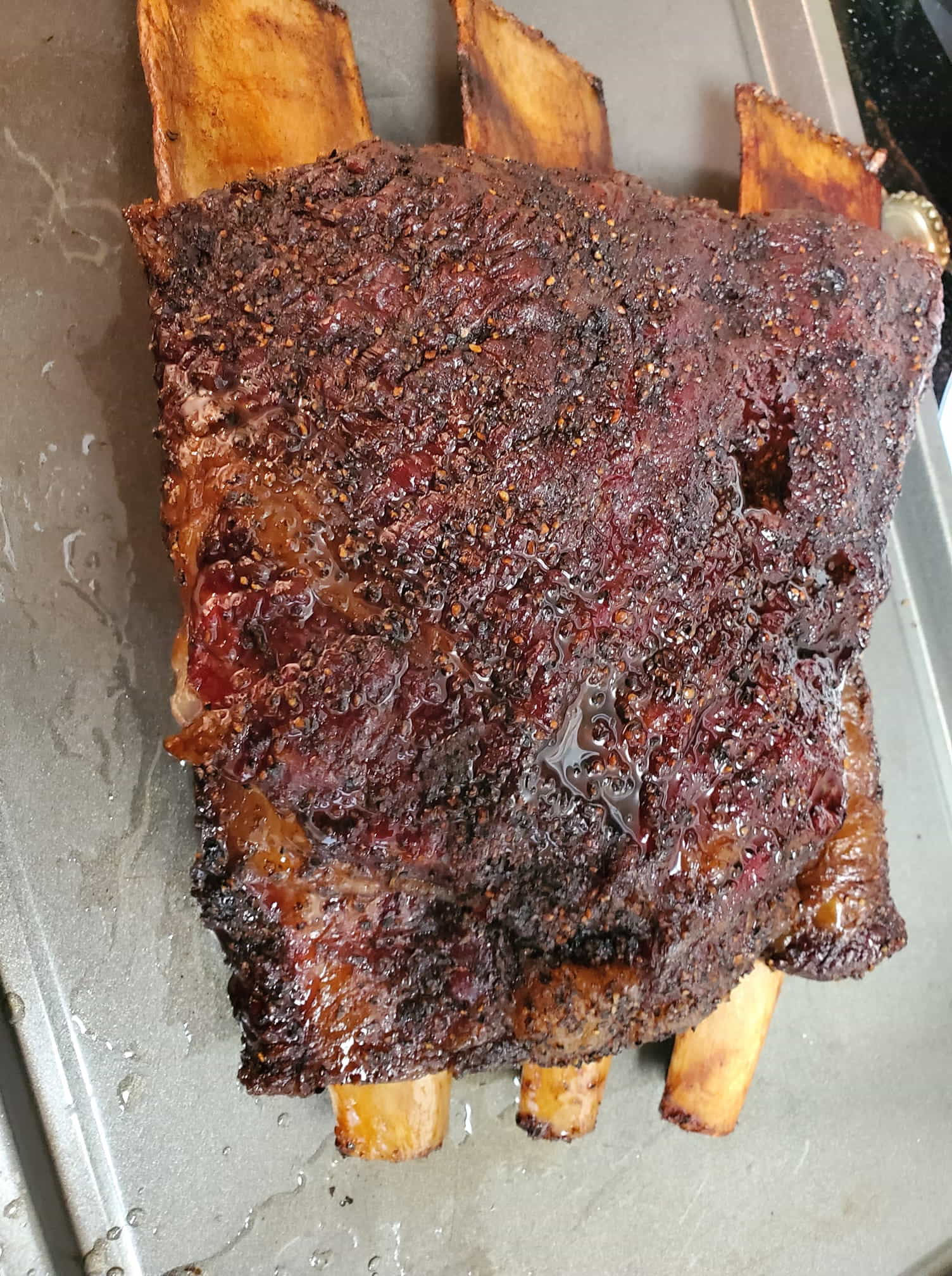
This is because resting allows the meat to come to room temperature and helps distribute the juices evenly throughout the meat. The recommended time to let ribs rest before cooking is about 30 minutes. The meat will absorb any delicious marinade or seasoning during this time, making them even more flavorful.
Additionally, this will give you enough time to preheat your grill or oven, ensuring that your ribs cook evenly and thoroughly. Remember, patience is key when cooking ribs, so take the time to let them rest before cooking for the best results.
How Long To Let Ribs Rest Before Cutting?
The juices in the meat need time to redistribute before cutting into it, so it’s crucial to give them 10-15 minutes of rest time. Skipping this step could result in dry meat, which ruins the entire dish. While it’s true that each rack of ribs is different, smoked ribs with thick meat require a longer resting time. If you’re unsure, go for 15-20 minutes. If you need to warm the ribs, wrap them in foil and place them in a cooler or oven for up to four hours. The optimal resting time for pork ribs is between 10 and 15 minutes, but beef ribs may need up to 20 minutes.
How Long To Let Ribs Rest After Smoking?
According to the experts, the optimal resting time for most pork ribs is between 10 and 15 minutes. This allows the meat to come down to an appropriate slicing temperature and gives the juices time to disperse, preventing the meat from drying. However, each rack of ribs is different, so it’s always a good idea to experiment with varying times of hold as you become more experienced in smoking. Whether you’re cooking baby back ribs, spare ribs, or beef ribs, a few minutes of resting time can make all the difference in ensuring a flavorful and juicy result.
How Long To Let Ribs Rest In Cooler?
If you’re wondering how long to let ribs rest in a cooler, there are a few things to remember. According to factual data, pork ribs should rest for 10-15 minutes before serving to allow the juices to redistribute throughout the meat. However, it’s also possible to rest them in a cooler for 2-3 hours and maintain a food-safe temperature. If you’re storing them in a cooler with other meats, such as brisket, they can last up to 4-5 hours if properly insulated. That said, it’s important not to let them rest for too long, as they will start to cool off and lose their tenderness.
How Long To Let Ribs Rest In Foil?
When cooking ribs, people often overlook one important step is letting them rest after they come off the heat. The optimal resting time for most ribs is between 10 and 20 minutes, depending on the thickness and type of meat. It’s best to wrap the ribs in foil or butcher paper during this time to help seal the moisture and keep them warm. Place the ribs in a cooler if you want to rest and hold them for up to an hour or two.
Regardless of how you choose to rest your ribs, this simple step can make a huge difference in the flavor and texture of the meat. So be patient, kick back, and enjoy a cold beverage while your ribs rest to perfection!
Does The Type Of Rib (Beef, Pork, Etc.) Affect The Resting Time?
One of the most important but often overlooked steps in cooking meat is resting it after it comes off the heat. But did you know that the type of rib you’re cooking can affect resting time? Let’s start with beef ribs. Beef is a dense meat with a lot of connective tissue, which means it takes longer to break down and become tender. When you cook beef ribs, you want to aim for a resting time of at least 10-15 minutes. This allows the juices to redistribute throughout the meat, resulting in a more tender and juicy rib.
Pork ribs, on the other hand, are a bit different. Pork is a leaner meat than beef, so it cooks faster and requires less resting time. You can get away with resting pork ribs for as little as 5-10 minutes. However, if you’re cooking a particularly thick or large rack of pork ribs, you may want to increase the resting time to 15 minutes to ensure the meat is fully tender and juicy.
Regarding other types of ribs, such as lamb or venison, the resting time will depend on the specific cut and how it’s prepared. As a general rule, leaner meats will require less resting time, while denser meats will require more.
In addition to the type of rib you’re cooking, other factors can also affect resting time. The size of the rib, the cooking method, and the internal temperature all play a role. Generally, the larger the rib, the longer it will need to rest. And if you’re cooking the rib using a high-heat method like grilling or broiling, it will require less resting time than a slow-cooked rib.
Can Ribs Be Over-Rested And Become Cold And Unappetizing?
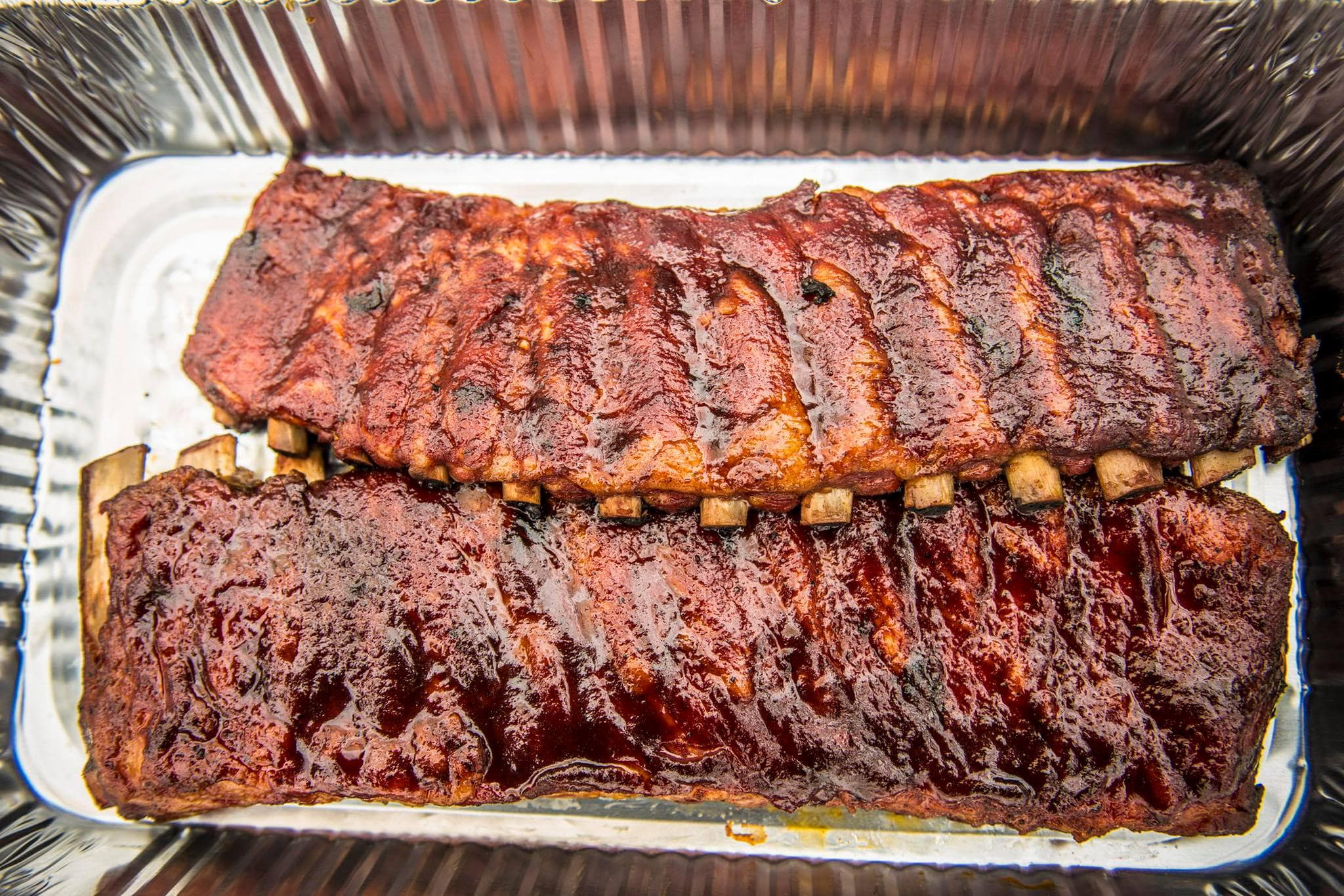
To answer this question, we need first to understand what resting means when it comes to ribs. Resting lets the meat sit after cooking to allow the juices to redistribute and settle. It’s an essential step in cooking that ensures the meat is juicy, tender, and flavorful. However, if the meat is left to rest for too long, it can become cold and unappetizing.
The ideal resting time for ribs depends on the cooking method used. For example, if you’re cooking ribs on a grill or smoker, you should let them rest for 10-15 minutes after cooking. This allows the juices to redistribute and settle, resulting in juicy and tender ribs. However, if you let your ribs rest for too long, they can become cold and unappetizing.
So, how do you know when your ribs are over-rested? The first sign is the temperature. If the ribs feel cold to the touch, they have been resting too long. Another sign is the texture. Over-rested ribs can become dry and tough, making them unappetizing to eat.
To avoid over-resting your ribs, keeping a close eye on them during the resting process is essential. If you’re unsure about the ideal resting time for your cooking method, use a meat thermometer to ensure the ribs are at the right temperature before you serve them. This will help you avoid over-resting the meat and ensure your ribs are juicy and tender.
Read more:
- How Long To Let Brisket Rest
- Tri Tip Vs Brisket
- What Temp To Pull Brisket
- Smoking Brisket At 225 Vs 250
Does The Cooking Method Affect How Long The Ribs Should Be Rested?
The short answer is yes. Let’s dive deeper into why and how. First, let’s review why resting your ribs is essential. When meat is cooked, the juices are pushed toward the center. Resting allows those juices to redistribute evenly, leading to the juicier, more tender meat. Resting also allows the meat to cool slightly, making it easier to handle and reducing the risk of burns.
Now, let’s talk about different cooking methods and how they impact resting time.
- Smoking: When smoking ribs, resting time is crucial. The low and slow cooking method used in smoking allows for a lot of moisture loss, meaning the meat needs time to redistribute its juices. After smoking, allow your ribs to rest for at least 15 minutes, but up to an hour is ideal.
- Grilling: Rest time is still important when grilling ribs, but it can be shortened. The high grilling heat causes less moisture loss compared to smoking, so 10-15 minutes of resting time should suffice.
- Baking: Baking ribs in the oven is popular, but it can lead to drier meat. To combat this, it’s important to cover your ribs with foil or place them in a tightly covered container while they rest. After baking, allow your ribs to rest for 10-15 minutes.
- Sous Vide: Sous vide cooking involves cooking the ribs in a vacuum-sealed bag in a water bath. Because the temperature is controlled and consistent, less moisture is lost during cooking. After sous vide cooking, rest your ribs for 5-10 minutes.
How to Rest Ribs?
Resting ribs is simple. Once your ribs are cooked, remove them from the heat source and place them on a cutting board. Cover them with foil or a clean towel to keep them warm, and let them rest for at least 10 minutes. This will give the meat time to finish cooking and allow the juices to redistribute.
Here are some tips to keep in mind when resting ribs:
- Please don’t cut into the meat too soon: As we mentioned earlier, cutting into the meat too soon will cause the juices to spill out, leaving the meat dry and tough. Be patient and wait at least 10 minutes before cutting into the ribs.
- Keep the ribs warm: While they are resting, you want to ensure they stay warm. Cover them with foil or a clean towel to trap them in the heat.
- Don’t rest the ribs for too long: While it’s important to let the meat rest, you don’t want to let it rest for too long. After about 30 minutes, the meat will start cooling down, and you’ll lose some juiciness.
- Consider the size of the ribs: The larger the ribs, the longer they may need to rest. If you’re cooking a full rack of ribs, you may need to let them rest for closer to 15 minutes.
Let Ribs Rest Covered Or Uncovered
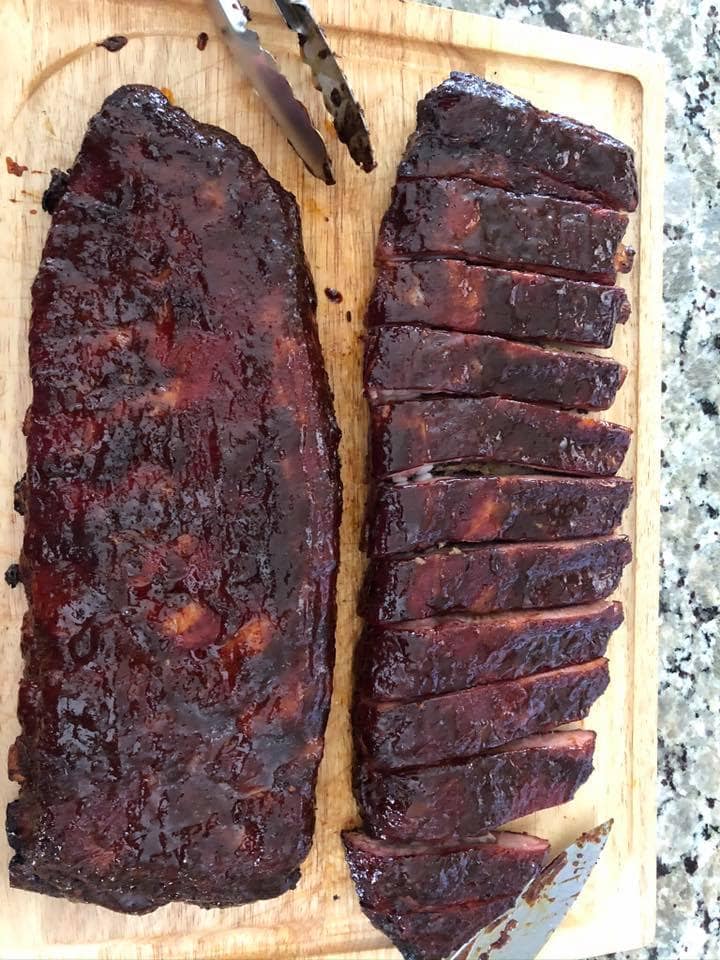
But should you cover them or leave them uncovered during this time? According to factual data, the preferred practice is to cover the ribs with foil. This helps to create a snug environment that retains heat and allows the meat to rest and set up. The optimal resting time for most pork ribs is between 10 and 15 minutes, though thicker meat may require a longer rest. Whether covered or uncovered, allowing the ribs to rest after cooking helps to redistribute the juices and keeps the meat moist and flavorful.
Should Ribs Be Rested At Room Temperature Or In The Fridge?
Some people believe that letting ribs sit at room temperature for a period of time before cooking can help them cook more evenly and retain moisture. The idea is that when the ribs are cold, the meat fibers are more tightly constricted, making it harder for heat to penetrate and cook them evenly. The fibers relax by letting the ribs come to room temperature, and the meat can cook more evenly.
However, there are some potential risks to this approach. Leaving meat out at room temperature for too long can increase the risk of bacterial growth, which can cause foodborne illness. The USDA recommends that meat should not be left out at room temperature for more than two hours, so if you choose to rest your ribs at room temperature, be sure to keep them out for no longer than two hours before cooking.
Another option is to rest your ribs in the fridge before cooking. This can help to keep them at a safe temperature and reduce the risk of bacterial growth.
However, some worry that resting ribs in the fridge can make them dry out. While it’s true that cold temperatures can cause the meat to lose moisture, this is unlikely to be a problem if you only rest your ribs in the fridge for a short period of time. Resting ribs in the fridge can help them retain moisture because the cold temperature can cause the meat fibers to contract, which can help to trap moisture inside.
So, Should You Rest Your Ribs at Room Temperature or in the Fridge?
Ultimately, whether to rest your ribs at room temperature or in the fridge comes down to personal preference and the available time. If you have the time to let your ribs come up to room temperature before cooking and are comfortable with the potential risks, this may be a good option for you. However, if you’re concerned about food safety or don’t have the time to wait, resting your ribs in the fridge is a safe and practical alternative.
How Do You Know When Your Ribs Have Rested Enough?
The answer depends on a few factors, such as the size of the rack of ribs, the cooking method, and the temperature you cooked them at.
If you’re cooking your ribs on a grill or smoker, you’ll want to let them rest for at least 10-15 minutes. This will give the meat time to reabsorb some of the juices and allow the connective tissue to break down further, resulting in a more tender bite.
If you’re cooking your ribs in the oven, you’ll want to let them rest for a bit longer – around 20-30 minutes. This is because ribs cooked in the oven tend to be larger and thicker, so they’ll take longer to cool down and reabsorb the juices.
Another factor to consider is the temperature you cook your ribs at. If you cook them at a low temperature for a long period of time (such as with a slow cooker or sous vide), you can get away with resting them for a shorter amount of time. However, if you cook your ribs at a higher temperature, you’ll want to let them rest for a bit longer to ensure they’re tender and juicy.
So, how do you know when your ribs have rested enough? The easiest way is to use a meat thermometer. Check the temperature of the meat in the thickest part of the rack – it should be around 140-145°F for pork ribs. If the temperature is too low, you’ll want to let the ribs rest for a bit longer. If it’s too high, you may have overcooked them.
Another way to check is to give the meat a gentle poke or prod. If it feels firm and bouncy, it needs more time to rest. If it feels soft and tender, it’s probably ready to be served.
Are There Any Particular Techniques Or Tips For Resting Ribs?
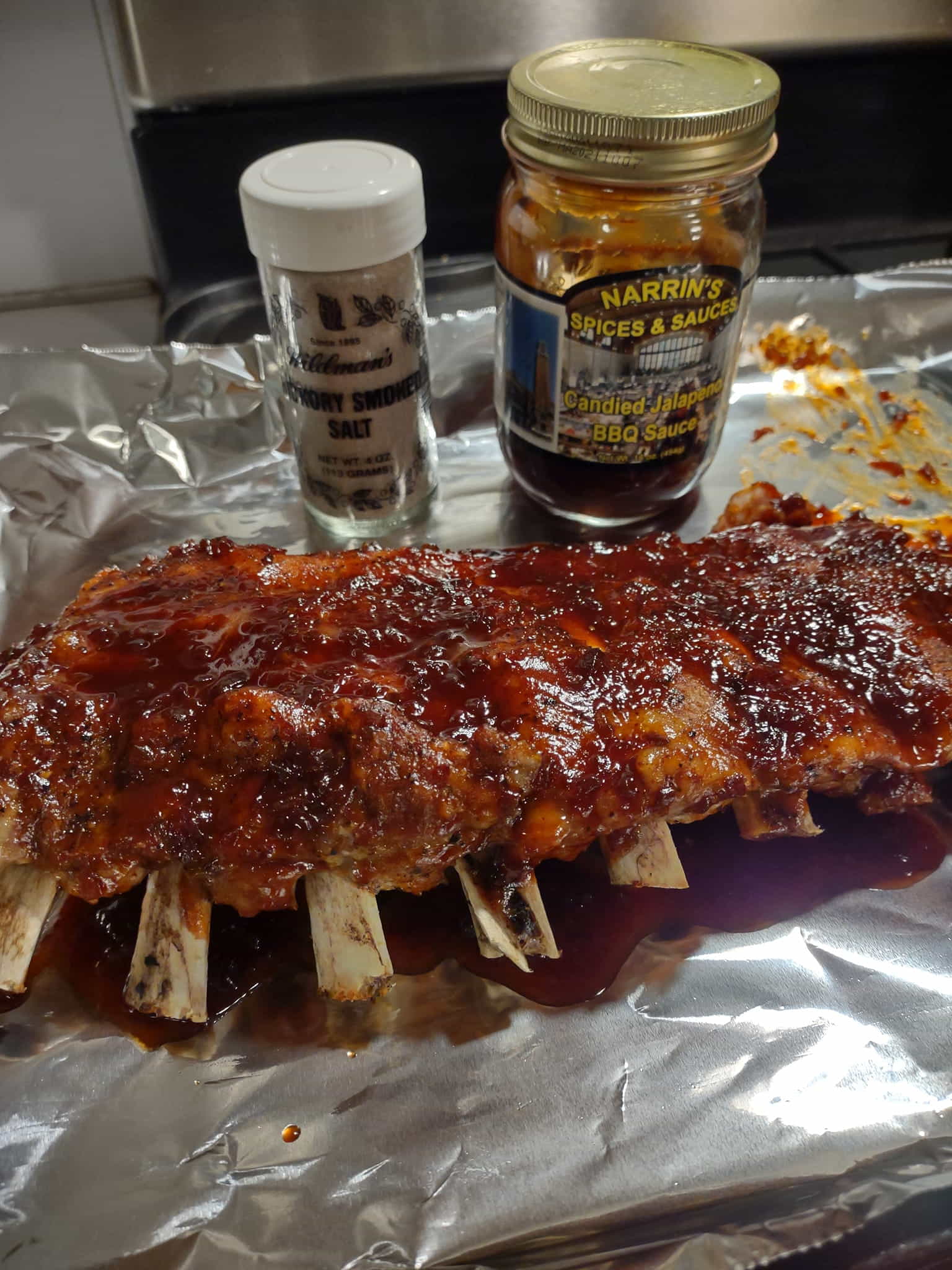
Now that we’ve established why resting ribs is important let’s talk about how to do it. Here are some tips and techniques to help you get the most out of your ribs:
1. Wrap in Foil or Butcher Paper
One popular method for resting ribs is to wrap them in foil or butcher paper. This keeps them warm and moist while they rest, allowing the juices to redistribute and the flavors to meld together. You can also add a bit of BBQ sauce or apple cider vinegar to the foil or paper to create a flavorful steam infusing the meat.
2. Rest in a Cooler
Another option is to rest your ribs in a cooler. This is a great method if you’re cooking for a crowd or need to transport your ribs to a different location. Wrap the ribs in foil or butcher paper and place them in a cooler with towels or a blanket to keep them warm. The cooler will keep them at the perfect temperature while they rest, and you can easily transport them to your destination.
3. Rest on a Rack
If you prefer not to wrap your ribs, you can also rest them on a rack. This allows air to circulate the meat, which can help prevent the meat from getting soggy or overcooked. Let the ribs rest for 10-15 minutes before slicing or serving to allow the juices to redistribute.
4. Don’t Rest Too Long
While resting your ribs is important, you don’t want to rest them too long. The meat can become mushy or overcooked if you leave them wrapped in foil or paper for too long. Similarly, going them on a rack for too long can become dry and tough. Aim to rest your ribs for no more than 30 minutes, and keep an eye on them to make sure they don’t overcook.
FAQs About How Long to Let Ribs Rest
Should Rubs Be Placed In A Warm Or Cool Environment During The Resting Period?
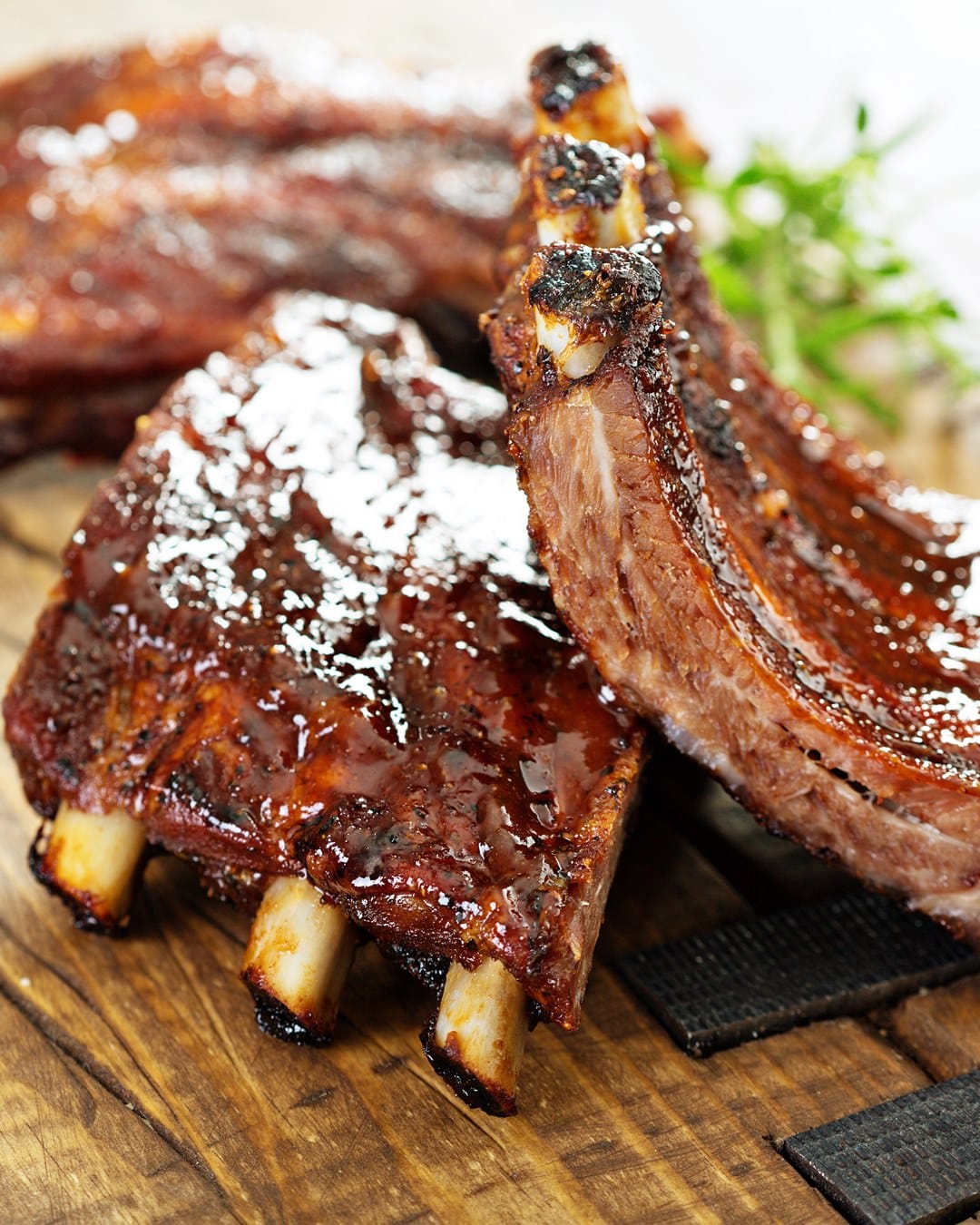
Based on factual data, keeping the ribs in a warm environment, such as a low-temperature oven, for no longer than 30 minutes is recommended. This will ensure that the ribs stay warm without drying out. Adding some apple juice, cider vinegar, and BBQ sauce to the foil is also suggested to prevent the meat from drying out. Alternatively, if appropriately wrapped, ribs can be rested in a cooler for up to 4 hours.
The amount of time the ribs should rest depends on the type of meat – baby back ribs should rest for 10 minutes, spare ribs for 15 minutes, and beef ribs for up to 20 minutes. Ultimately, resting the meat for sufficient time is necessary to bring out the best flavor and juiciness in the ribs.
Is It Possible to Overcook Ribs?
The truth is that it is possible to overcook ribs, just like any other meat. The key is finding the right temperature and cooking time to produce tender, juicy meat without drying it out.
A good rule of thumb is to ensure that the meat separates from the bone easily when lightly pulled, indicating that it’s cooked to perfection. If the ribs are left in the oven or smoker for too long, they can become tough, dry, and chewy, resulting in a disappointing meal.
How Long To Let Ribs Marinate?
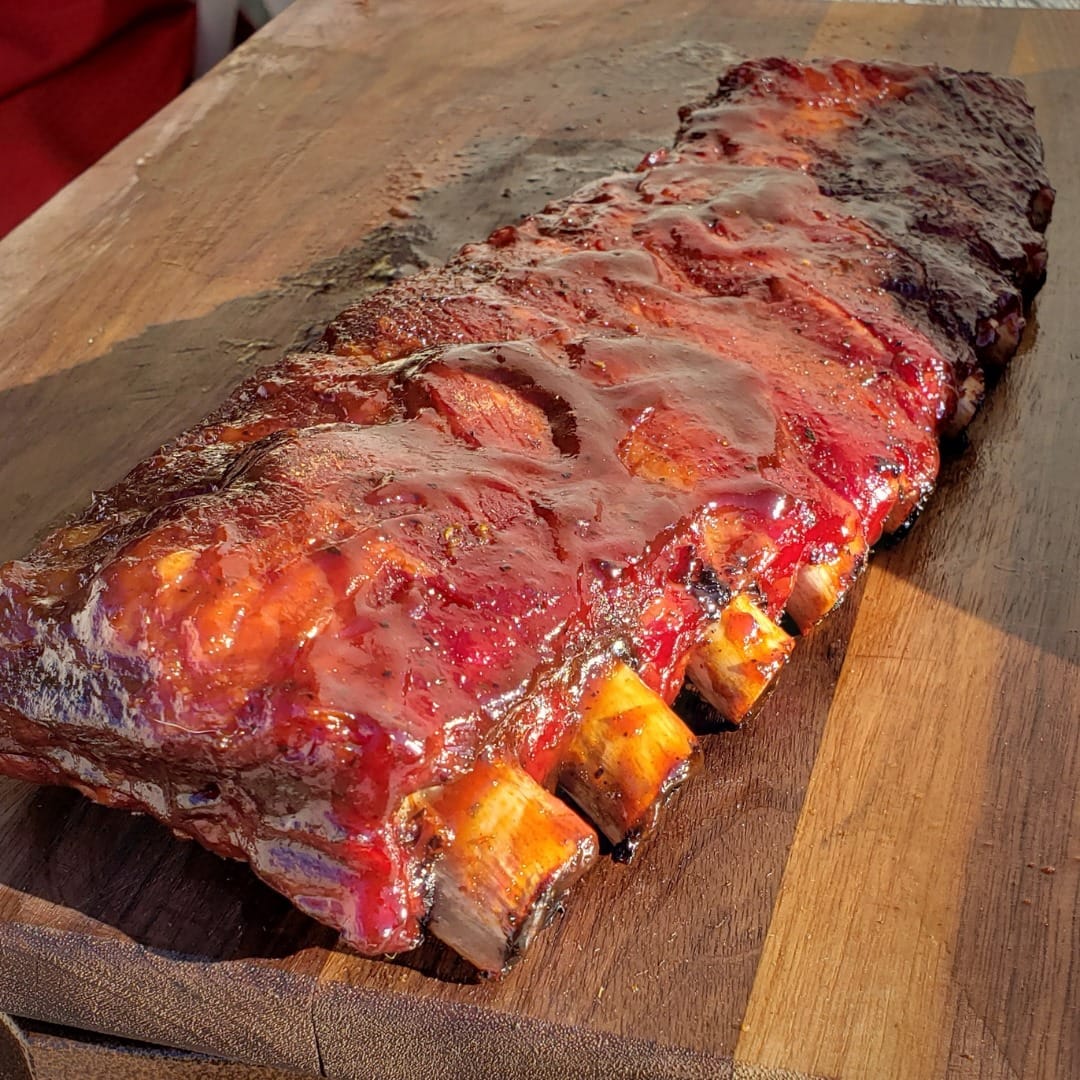
When marinating ribs, time can make all the difference in the final flavor. Factual data suggests that 8-12 hours is the ideal marinating time for ribs. However, if time is of the essence, a minimum of 2 hours is recommended. Marinating the ribs overnight is also possible, allowing the flavors to penetrate the meat fully. Some recipes suggest marinating for up to 48 hours, but this is the maximum recommended time.
Whichever time frame is chosen, turning the ribs in the marinade is essential so that both sides are coated equally. Overall, it’s important to allow enough time for the ribs to marinate so they are bursting with flavor and sure to impress at the next BBQ.
Do Dry Rubs Or Seasoning Impact The Resting Time For Ribs?
Dry rubs or seasonings can certainly impact the resting time for ribs. Most dry rubs contain salt, which has a dehydrating effect on the meat. Therefore, it is recommended that the ribs be coated with a dry rub for no more than 12 hours. If time allows, the seasoned ribs can sit for several hours, but it is essential to refrigerate them in the meantime.
While there is no requirement to apply dry rubs hours or even a day ahead of grill time, many people strongly agree on when to apply a rub. Some recommend allowing a few hours, while others advise a quick rub for a more meaty flavor or an overnight rub.
Dry rubs can help seal ribs’ moisture by creating a thick layer on the outside of the meat. However, it is important to add salt at the same time as the spices to ensure it penetrates, albeit not as deeply. Some popular seasoning options include dry rubs, marinades, sweet-sour, tangy & spicy taste from their Ribs, which requires intense flavoring.
Conclusion
In conclusion, the question of How Long to Let Ribs Rest does not have a one-size-fits-all answer. Consider the size of your ribs, the cooking method, and your preferences when deciding how long to let them rest. And don’t forget to cover them with foil during the resting period to help retain their heat and make them even more tender. Happy grilling!
References:
- https://cooking.stackexchange.com/questions/53710/is-there-any-advantage-of-applying-dry-rub-overnight-for-baby-back-ribs-for-smok
- https://www.allrecipes.com/recipe/22469/barbecue-ribs/

Hey readers! Chip Holland here, and I’m a Manager of this website. My passion for writing about it only matches my passion for BBQ. Follow my blog for mouth-watering recipes, tips, and tricks for the perfect smoke, grill, and BBQ. I’m sure you won’t be disappointed!
